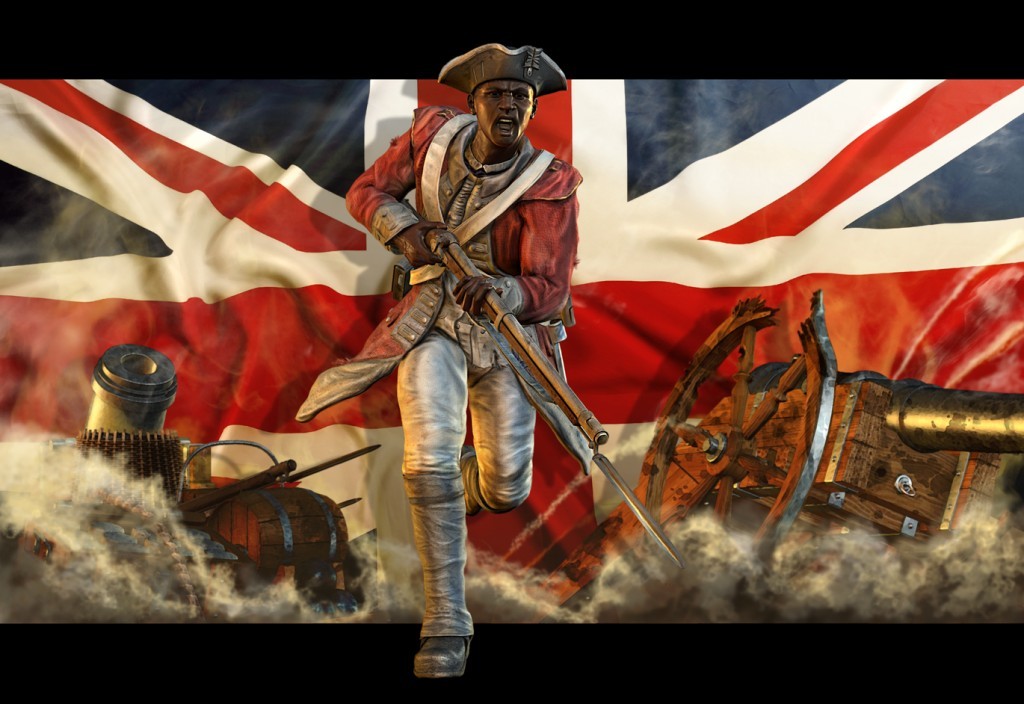Discussion on books, articles, and other resources related to the black military experience during America's formative years.
Thursday, November 26, 2015
God Save the King! Black Loyalists of the American Revolution
Two hundred forty years ago, Lord Dunmore, the governor of Virginia issued a proclamation manumitting slaves and bondsmen whose master was in rebellion against the Crown*. Clinton and other British officials would declare this policy with the purpose of denying the rebellion a labor force, fomenting servile insurrection, and inflicting economic loss. Thousands of freedom seeking blacks would make their way to British commands to enlist, dwarfing the approximately 5000 that fought for the colonial forces.
When in November 25, 1783, the last occupying British forces evacuated New York, it took with it 3000 black loyalist, fleeing the almost certain fate of being placed back into slavery, or like the rebel slaves who ran away and fought as free men, spend the rest of their lives evading capture.
Monday, November 9, 2015
Exerpt of : "Men of War" at the Crater by the author.
This is from my book:
At the siege of Petersburg on July 30, 1964, General Ambrose E. Burnside developed an elaborate plan to tunnel under the Confederate defenses. The tunnel was to be filled with explosives that would damage the Confederate defenses. Black troops would then rush in to seize the town. Black troops had gained a reputation for fighting with significant determination and tenacity when charging Confederate works and trained for the attack. General Grant, however, was not comfortable with Burnside's reason for using black troops and substituted them with a more experienced but untrained white division. The switch resulted in a disaster. The black troops had been trained to go around the crater created by the explosion. The white troops, however, went into the crater instead of going around it and suffered heavy casualties. General Grant then sent the black troops into the crater to save the white troops, but the element of surprise had been lost. Black troops pushed the rebel line back but suffered heavy losses when the rebels were reinforced.
Congress called General Grant to come to Washington and explain.
Earlier in his testimony, Grant had said: 'General Burnside wanted to put his colored division in front, and I believe, if he had done so, it would have been a success."
General Grant took the blame for the failure of the attack on his decision to switch black troops for white troops. The Joint Committee agreed with General Grant and suggested that black troops should be used at any hazard if dictated by the situation.
"Your Committee desire to say that, in the statement of facts and conclusions which they present in their report, they wish to be distinctly understood as in no degree censuring the conduct of the troops engaged in this assault. While they confidently believe that the selection of the division of colored troops by General Burnside to lead the assault was, under the circumstances, the best that could have been made, they do not intend thereby to have it inferred that the white troops of the Ninth Corps are behind any troops in the service in those qualities which have placed our volunteer troops before the world as equal, if not superior to any known to modern warfare."[1]
General Grant also testified that he switched the use of black troops for white troops in the battle to avoid excessive losses of black troops. A more plausible reason is that General Grant's white troops suffered over 40,000 casualties (The Battle of the Wilderness) on the way to Petersburg just two month earlier. Letting black troops carry the ball into the end zone because they may be better, could have been too humiliating to accept.
This battle is important because it led to Grant's approval of Butler's New Market Heights plan. Congress ordered Grant to use blacks to there ability. Grant relieved Butler for not using black troops in a deadly frontal attack of fort fisher. Black troops were often at the advance of the Union Army and enter Charleston and Richmond first.
John White
Subscribe to:
Posts (Atom)
